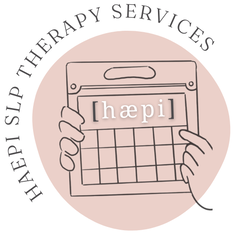|
One of the biggest reasons we don't see progress with AAC is because the device isn't being used enough across all environments. A communication device (often an iPad) isn't just something that should be pulled out during speech sessions and then tucked away, it is the child's *voice* and needs to be accessible across all situations.
Wouldn't it be silly if we only gave a child who needed glasses their glasses when they were at the optometrist? The same thing goes for AAC! Some kids might use a combination of verbal speech and a speech-generating AAC system, but it is up to THEM to decide when they need which system... not us. Kids also learn AAC the same way verbal language is acquired -- by having consistent input by different users across all environments. We need to model the use of the device, and immerse the child in its language, for them to use it independently. So please, take it out at recess, bring it to gym, explore with it at lunch! These are often moments in the day that are meaningful to our children, and we can model so much valuable language input during these activities. Plus, there are many great iPad cases out there can protect the device across all environments. I personally think the trade off is more than worth it! I'll end with a quote that always resonates with me on this topic: "The average 18 month old child has been exposed to 4380 hours of oral language at a rate of 8 hours/day from birth. A child who uses a communication system and receives speech/language therapy 2 times a week of 20-30 minute sessions will reach the same amount of language exposure after 84 years." --Jane Korsten So let's ask ourselves... is it really the kids who aren't progressing, or are WE responsible for not providing the input and therefore limiting their success? by Halle Demchuk, SLPPaediatric SLP | GLP-Trained Clinician | Owner of HAEPI SLP |
The HAEPI BlogCheck here for HAEPI updates, helpful SLP information, free resources, articles, and more!
Archives
June 2024
Categories
All
|
Empowering Happy Communicators |
get in touch |
Quick Links |
© HAEPI SLP THERAPY SERVICES.
HAEPI SLP Therapy Services is proudly neurodiverse, Indigenous-owned, and woman-operated.
We acknowledge that the City of Thunder Bay has been built on the traditional territory of Fort William First Nation, signatory to the Robinson Superior Treaty of 1850. We also recognize the contributions made to our community by the Métis people. We strive as guests on these lands to honour our responsibilities to care for this land and uphold the Treaties that were signed therein.



